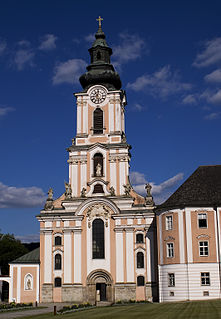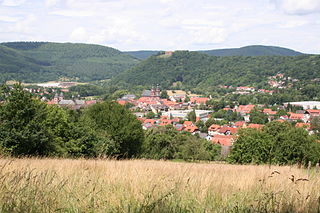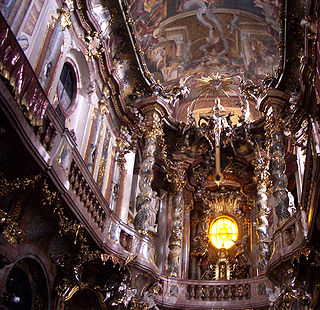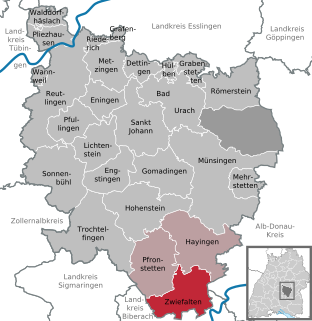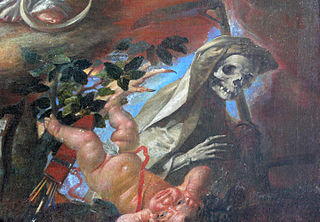
Johann Michael Feuchtmayer (the Younger) (sometimes spelled Johann Michael Feuchtmayr or Feichtmayr) (1709 – June 4, 1772) was a German stuccoworker and sculptor of the late Baroque period. He collaborated with the architects Johann Michael Fischer, Johann Joseph Christian, and Franz Joseph Spiegler on numerous ecclesiastical buildings in Upper Swabia. His stucco decoration in the Benedictine abbey church (designed by Fischer) of Ottobeuren is considered his crowning achievement. [1]

Stucco or render is a material made of aggregates, a binder, and water. Stucco is applied wet and hardens to a very dense solid. It is used as a decorative coating for walls and ceilings, and as a sculptural and artistic material in architecture. Stucco may be used to cover less visually appealing construction materials, such as metal, concrete, cinder block, or clay brick and adobe.

Johann Michael Fischer was a German architect in the late Baroque period.

Johann Joseph Christian was a German Baroque sculptor and woodcarver. His masterworks are considered to be the choir stalls in Zwiefalten Abbey and Ottobeuren Abbey.
Contents
Feuchtmayer was born into a family of artists in Wessobrunn, Bavaria. He and his uncle, the stuccoworker Franz Joseph Feuchtmayer (1660–1718); his uncle, the painter Johann Michael Feuchtmayer the Elder (1666–1713); his brother Franz Xaver Feuchtmayer the Elder (1705–1764); his cousin, the painter and sculptor Joseph Anton Feuchtmayer (1696–1770); and his nephew, Franz Xaver Feuchtmayer the Younger (b. 1735), comprise the Wessobrunner School.

Wessobrunn is a municipality in the district of Weilheim-Schongau in Bavaria in Germany.

Bavaria, officially the Free State of Bavaria, is a landlocked federal state of Germany, occupying its southeastern corner. With an area of 70,550.19 square kilometres, Bavaria is the largest German state by land area comprising roughly a fifth of the total land area of Germany. With 13 million inhabitants, it is Germany's second-most-populous state after North Rhine-Westphalia. Bavaria's main cities are Munich and Nuremberg.

Franz Joseph Feuchtmayer was a member of the German Feuchtmayer family of Baroque artists of the Wessobrunner School.



